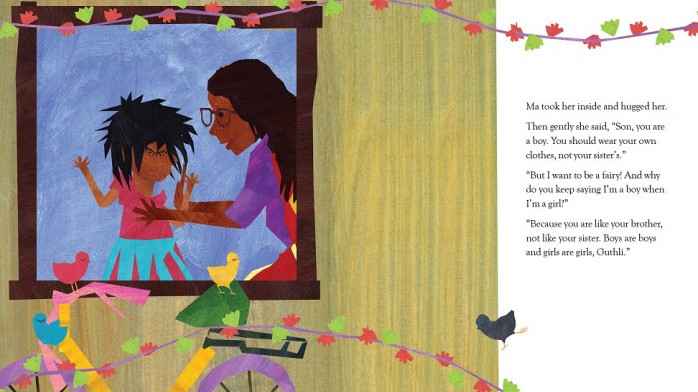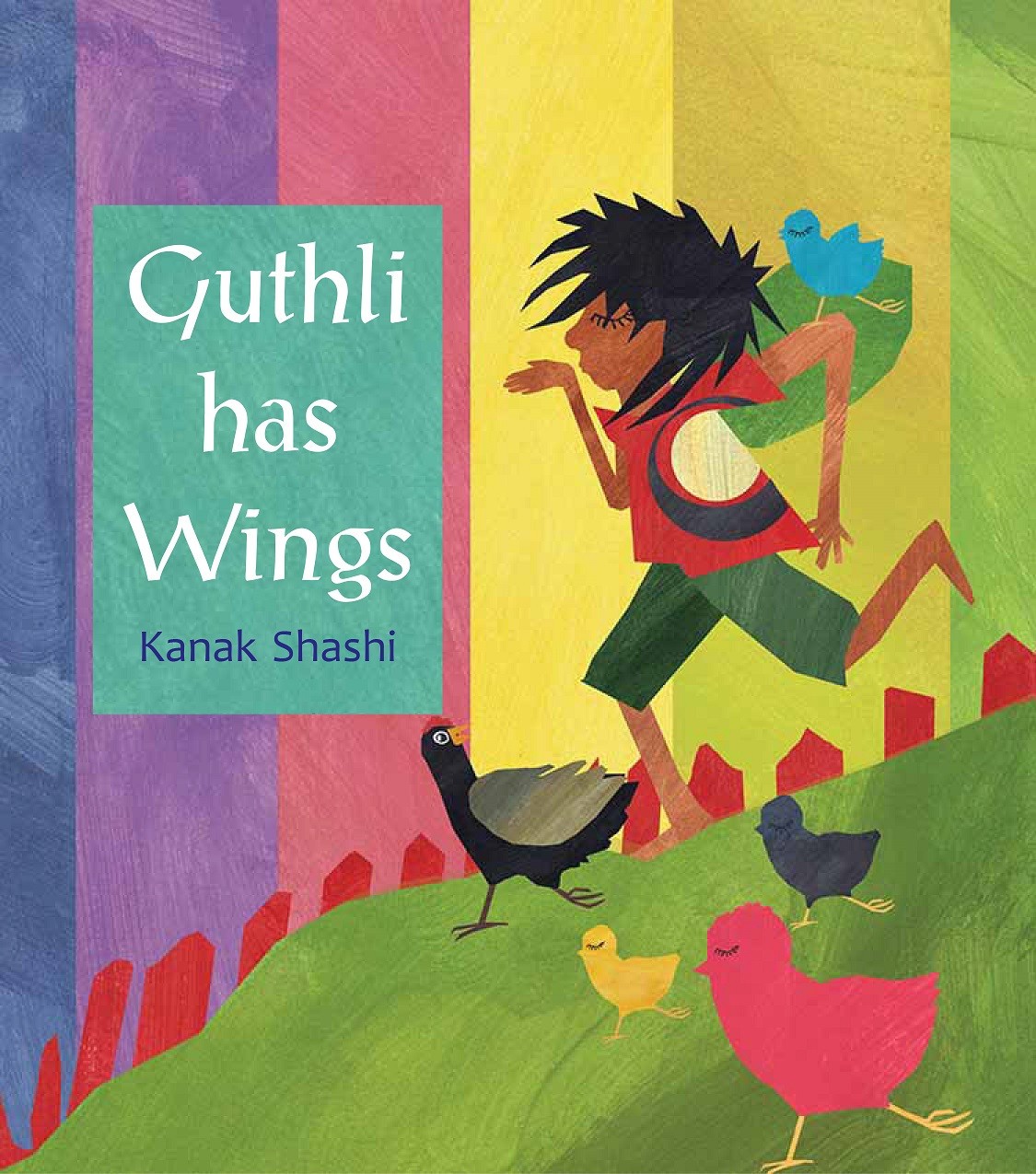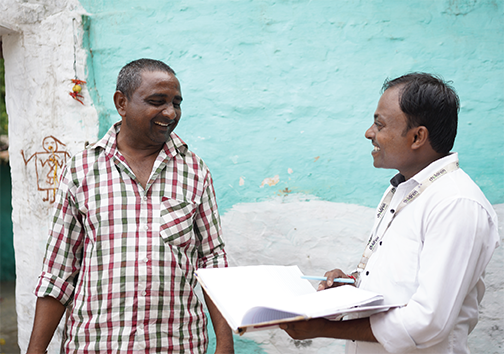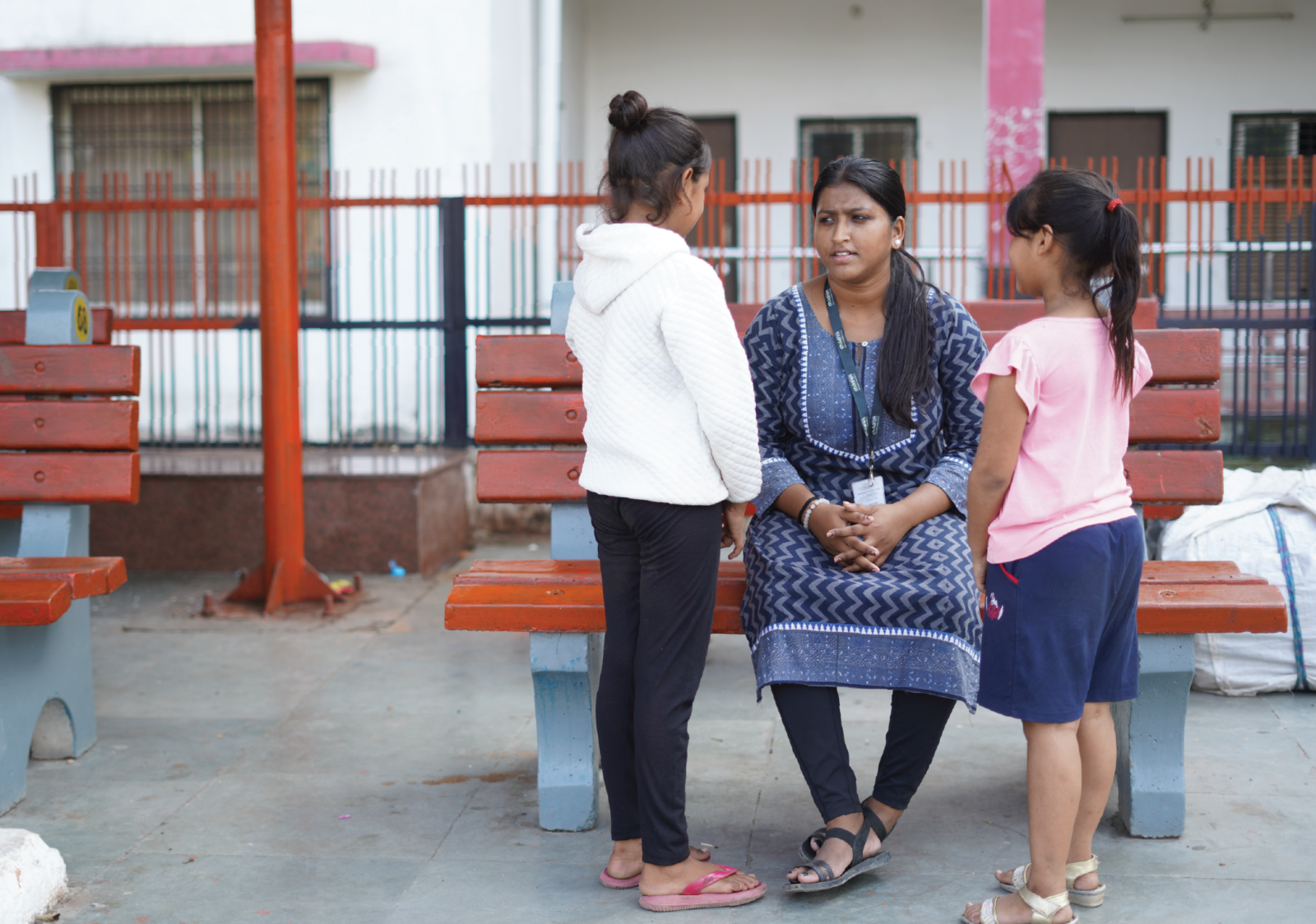In collaboration with Tulika Books, we present book reviews every month of new age stories and age old fables, to preserve and promote the habit of reading amongst all children.
She is a chatterbox, loves drawing fairies, roams the Satpura hills, rides a bicycle, and is her mother’s sonchiriya, her golden bird. Guthli is like any other child; her day is like that of any other child; her wishes are like that of any other child, then what makes her story so unique?
A peek into an incident in Guthli’s life can start much-needed conversations about gender identity, gender nonconformity, gender pronouns, and so much more. Well, that’s what makes her story unique!
Kanak Shashi’s picture book, Guthli Has Wings, is a simple yet compelling narrative of a child who wants to be a fairy, not a handsome prince that her mother insists she is born to be.
The book begins by telling us how a day in Guthli’s life is, and with each flip of the page, each brightly coloured illustration, we delve deeper in to her life. It is the day before Diwali; her parents and her siblings are prepping for the next day while she is busy making a rangoli. Soon, Guthli spots a bag of new clothes. Given the festivity, there are new clothes for everyone, but Guthli doesn’t like her pair of new clothes at all. Instead, she fancies the pretty frilly frock brought for her sister. She tip toes away from everyone to try the frock on, and soon returns with an enthusiastic twirl. She loves the way she looks in the frock, but her happiness is met with her father’s furious glare, her sister’s annoyed wail, and her brother’s naïve mocking. Her mother rushes her into her room and lovingly tells her, “Son, you are a boy. You should wear your own clothes, not your sister’s.” Guthli cannot understand as to why her mother keeps insisting that she is a boy. Her mother reasons, “Because you are like your brother, not your sister. Boys are boys and girls are girls.”

This incident pulls Guthli into a shell. She is no more the vivacious chatterbox. She keeps to herself and speaks only with the trees for they don’t stop her from being what she wants to be, and see her for who she really is. On one such day, Guthli’s mother calls her in and asks her to open a package. Guthli opens it quietly but is surprised to find a beautiful frock, awaiting to be donned.
The first time I came across a transwoman was when she was knocking at the window of a car, begging for money. The next time I saw another transwoman, she announce her arrival in my compartment in the train with her loud claps. I remember having so many questions about what I saw. Why are these men dressed in sarees? Isn’t a saree for a woman? If they are dressed in a woman’s clothing, are they really men?
They were definitely different; they stood out. Movies and radio would jibe them, but my questions remained unanswered.
Yes, answers to these questions can be layered and not always straight forward, particularly when a child is asking the questions. However, if we cannot fully explain the many intricacies of gender identity, we must at least introduce these concepts and make an effort to break the stereotypes that are etched in young minds very early on.
Guthli Has Wings is a spark that can help parents start conversations about gender pronouns, gender nonconformity, and gender identity with their children in an engaging manner. Most importantly though, this book can help children learn the invaluable lessons of compassion and kindness.







